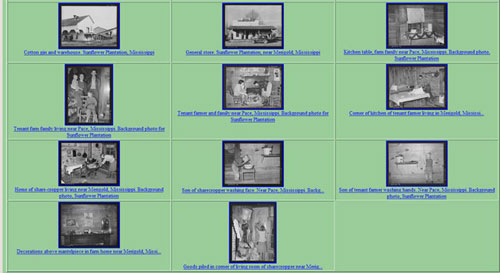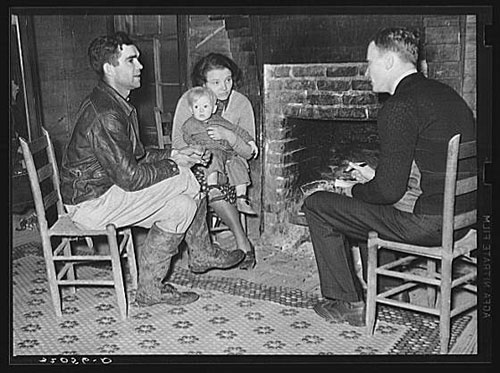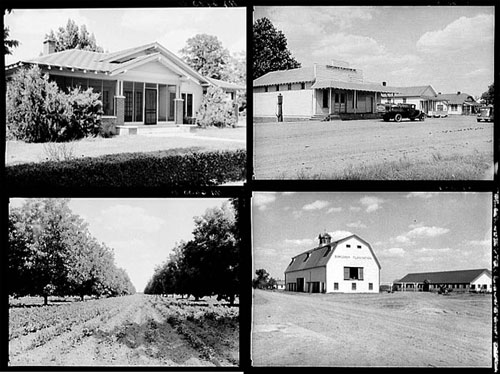| home | pg. 1 | pg. 2 | pg. 3 | pg. 4 | pg. 5 | pg. 6 | pg. 7 | pg. 8 | pg. 9 | pg. 10 | pg. 11 | pg. 12 | pg. 13 | pg. 14 | pg. 15 | pg. 16 | pg. 17 | notes | Transylvania detail 1 | Transylvania detail 2 | Wolcott detail | Bibliography | D. Gorton Homepage | Jane Adams Homepage
|
|
Reading the Photographic Record
by
Jane Adams
D. Gorton
| Here are some of the 24 captioned images Russell Lee shot in January 1939 of houses and other structures, and the sharecroppers who occupied them near Pace and Merigold, Mississippi. They are labeled as “background photo for Sunflower Plantation.” | 
Background photos for Sunflower Plantation. Pace and Merigold, Mississippi. Russell Lee, Jan. 1939
|
|
On the most superficial level, the images are part of the documentation of rural poverty for which the FSA is so famous. But there’s a problem: All the tenants shown in these pictures are white. We know from statistical sources that Sunflower County in 1940 was 71 percent black (1930 70 percent). In 1930 96 percent of farms in Sunflower County were operated by tenants (93 percent in 1940), and nearly 80 percent of all farms were operated by blacks. In other words, the overwhelming proportion of tenant farmers were black, yet no blacks appear in Lee’s “background to Sunflower Project” pictures. |

Tenant farmer being interviewed by FSA (Farm Security Administration) Family Section agent, near Pace, Mississippi. Background photo for Sunflower Plantation. Russell Lee. Jan. 1939. LC-USF34-032056-D
|
| Probing a bit further, one could reasonably guess from a number of internal clues that these tenants are going to move to Sunflower Plantation. Surveying all the Sunflower photos created by the FSA, some 61 captioned photos (and at least double that uncaptioned), one finds that it was “optioned by the Resettlement Administration” in 1936.[6] Mydens’ 17 1936 photos show what might be considered a “typical” Delta plantation – a center with a gin, seedhouse, barn, mule shed, blacksmith shop, and manager’s home, with two black men repairing a plow at the blacksmith shop. |  |
| home | pg. 1 | pg. 2 | pg. 3 | pg. 4 | pg. 5 | pg. 6 | pg. 7 | pg. 8 | pg. 9 | pg. 10 | pg. 11 | pg. 12 | pg. 13 | pg. 14 | pg. 15 | pg. 16 | pg. 17 | notes | Bibliography | Transylvania detail 1 | Transylvania detail 2 | Wolcott detail |
|
|